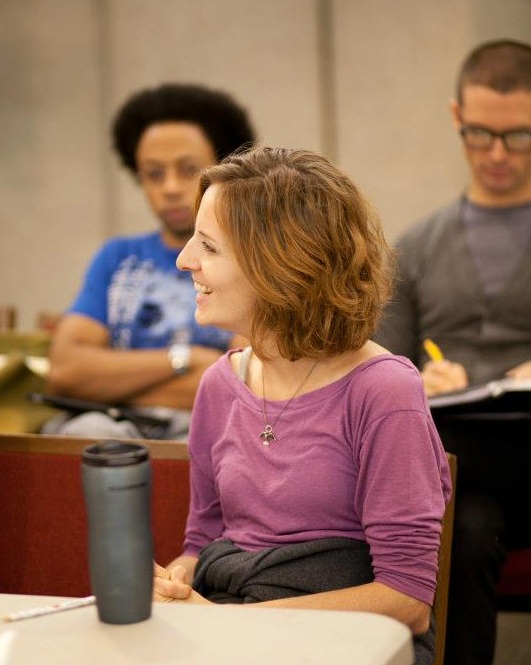Writing for Children →
(This blog was originally published by The Public Theater.)
I’ve never had any interest in children’s theater. In fact, as a result of a few unfortunate children’s theater experiences, I confess I’ve actually held it in contempt. Even after entering motherhood wonderland, I resisted the idea of writing for my own daughter. But now I find myself writing, not just children’s theater but a children’s musical. There’s only one way this could have happened–Oscar Wilde tricked me into it.
Anyone who knows me knows of my fascination with Oscar Wilde. This obsession is partly due to a fairy tale he wrote–The Selfish Giant. In the context of Wilde’s essay De Profundis (which he wrote while imprisoned for Sodomy), I developed a literary curiosity about the fairy tale genre and it’s connection to humankind’s pursuit of the divine. My theory was confirmed by my research and, suddenly, through the fairy tale, children’s theater beckoned me.
I’m currently writing the book and lyrics to a short musical adaptation of The Selfish Giant with Michael Castillejos (music and lyrics). Firebone Theatre is producing the musical as part of a Holiday Fairy Tale Festival this fall (also featuring EWG alumn Pia Wilson’s hilarious adaption of Perrault’s The Fairies). As I write, I find myself experiencing a strange giddiness imagining the response of the children in the audience. And I feel a grave responsibility knowing that the magic of the childhood imagination, which I’ve come to see as sacred will, for the duration of the show, rest in my hands.
Spoiler alert: Wilde makes the children fall in love with the giant and then Wilde kills him. At our first read through, this made some people in the room uncomfortable. “Do we really want children thinking about death at Christmas time?” they gently questioned. Here’s what the fairy tale gets–children know. They know about death, instinctively, by about age three. They want to talk about it frankly. They want to know if they should be afraid. Wilde says they shouldn’t. He sends a boy to welcome the giant into death with wide open arms. And, as in all fairy tales, love conquers death. It doesn’t eliminate death–it is victorious over it.
The childhood universe is inherently mythological. When I tap into that, I can write for children with as much writer’s integrity as I write for a sophisticated audience as that of The Public. The challenge of writing for children is that you can’t cover up half truths with intellectual banter or pop culture references. Children’s eyes and ears cut through that much more sharply than our own. Children demand truth and honesty, and if you don’t deliver, they’ll call you on it. Wilde knew that. (Yet another reason to love him.)
Writing for children thrills and scares me. Their precious little hearts and psyches literally contain the hope of future generations, and I do not want to break them. But fairy tale tellers believe that, in the face of evil, children must muster courage, and they determine to teach children how to do just that. So, we’re using the typical children’s theater tricks: audience interaction, physical comedy, and upbeat dance numbers. And we’re feeding them marshmallow hot chocolate and cookies. And, I guess, ultimately, we’re relying on their imaginations to grasp for the divine in ways that, perhaps, we’ve forgotten how to.
